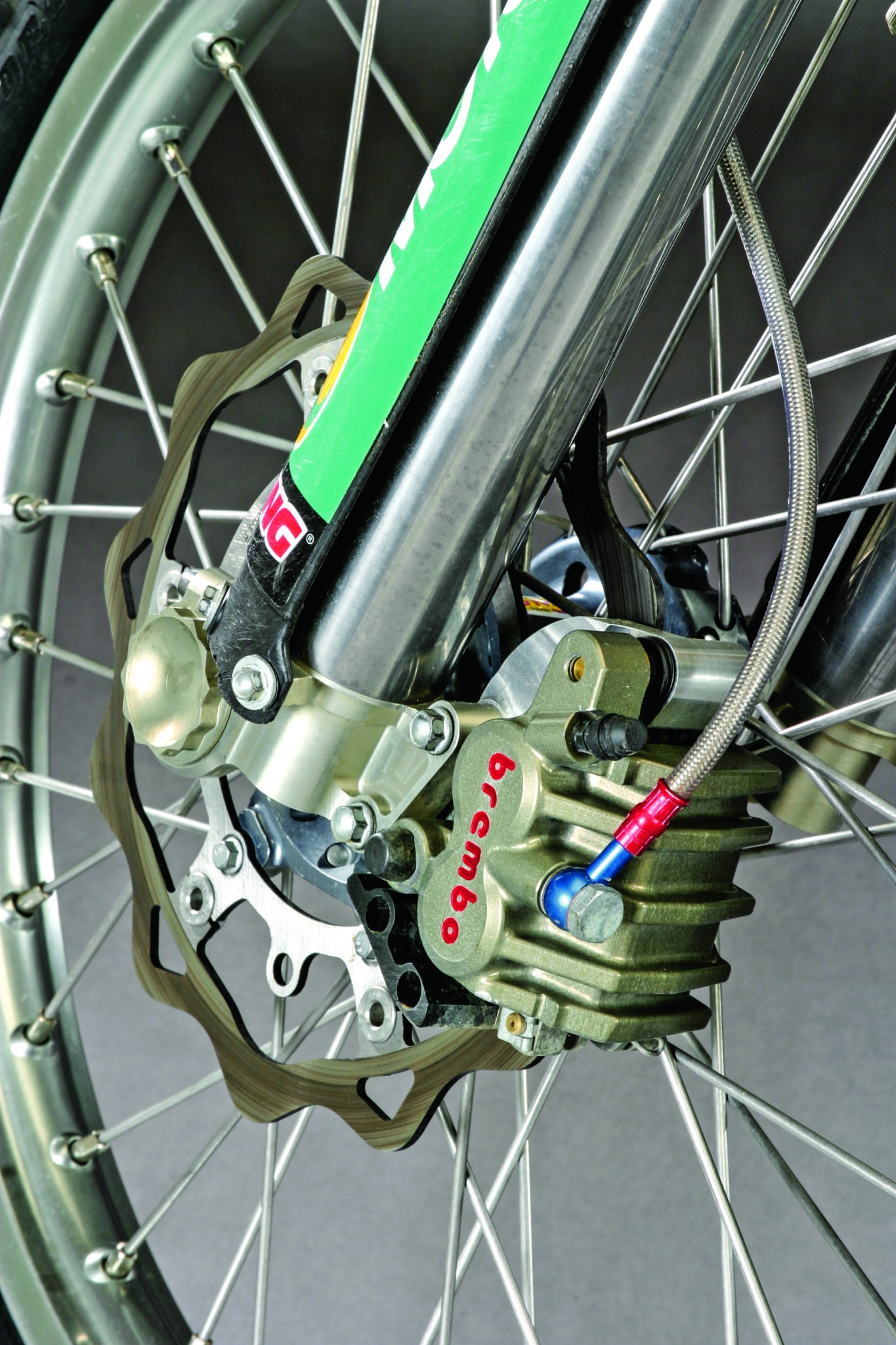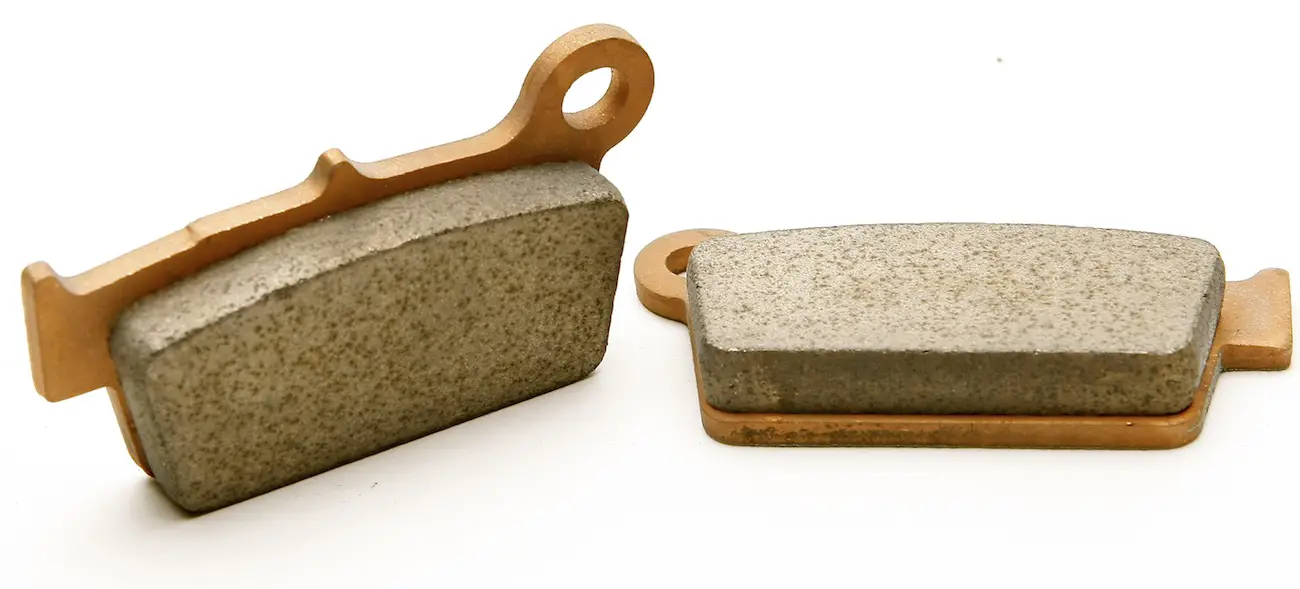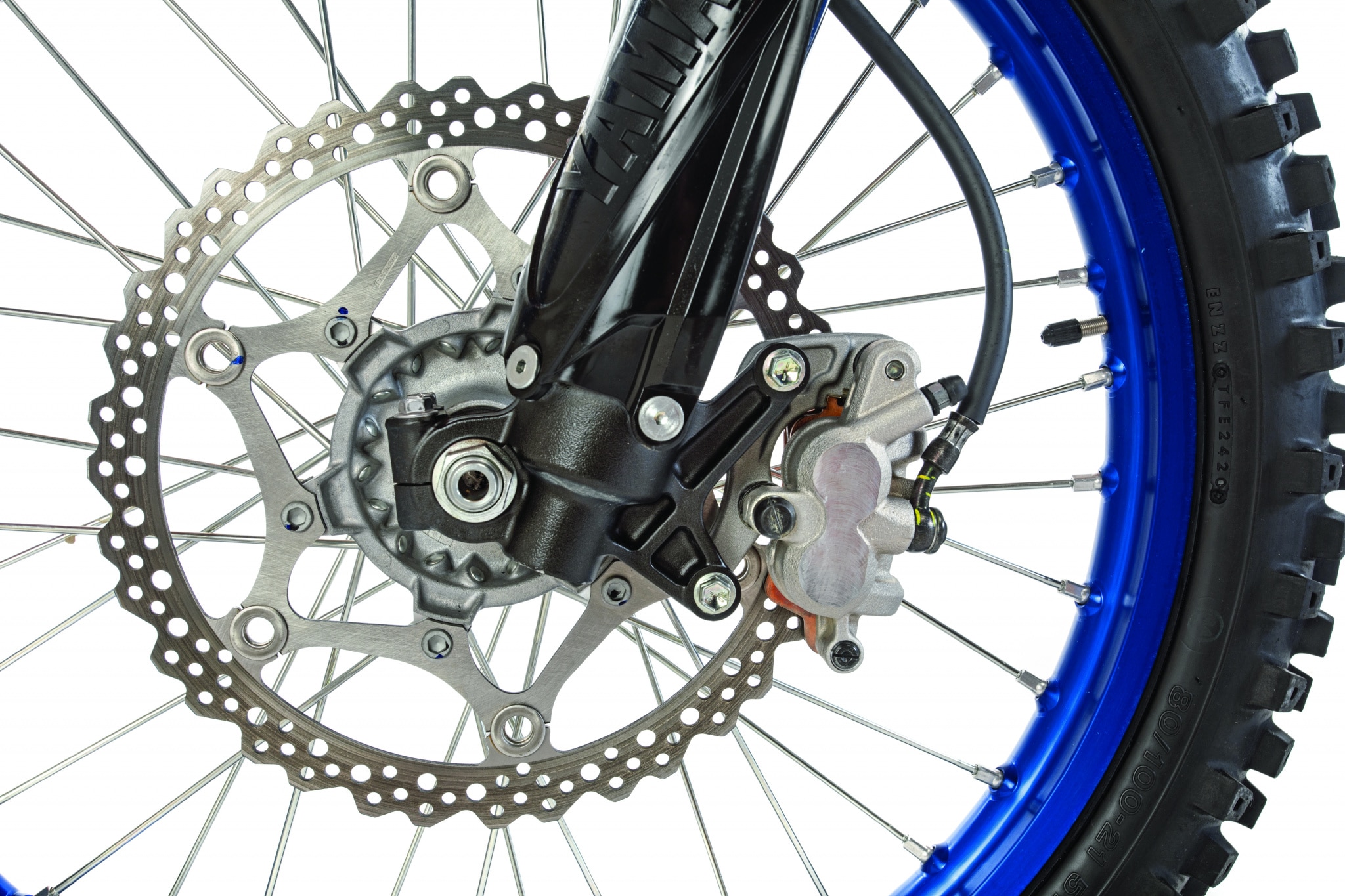TEN THINGS ABOUT THE SCIENCE OF BRAKES
(1) How it works. Motocross brakes work just like hydraulic actuation on a clutch. The brake fluid is pressurized by squeezing a hand lever or pressing down on the foot pedal. This applied force pulses the fluid inside the master cylinder reservoir down the brake hose to apply force against the caliper’s piston. This piston then pushes the brake pad against the rotor. To work properly, the brakes must have the correct amount of fluid inside, and the fluid must not be contaminated by air or water.
(2) Ratio. There are two pistons controlling the pressurization of the brake fluid—one in the master cylinder and one at the bottom of the hose in the caliper. The ratio of the two pistons’ sizes affect the amount of force applied to the brake. Smaller pistons are more powerful than larger pistons because they require less force to engage. Unlike most brands, which use two of the same-sized pistons at the caliper, Honda’s front brake caliper has pistons of different sizes that balance strength and modulation.
(3) Pedal vs. lever. The piston ratios for front and rear brake systems are completely different. The front brake uses two pistons at the caliper and a bigger rotor to enhance stopping power, while the rear brake uses a single piston at the caliper, a small rotor and more free play in the brake pedal stroke. The front brake is more precise, and it multiplies force quicker to compensate for the limited strength in the rider’s hand. Conversely, a foot brake isn’t as precise, because motocross boots are not as sensitive as the human hand. They can easily apply much more pressure than the rider’s fingers.

(4) Brake hose. Sometimes, if a brake system is pressurized beyond the hose’s capability, the hose will expand. Expansion in the hose decreases pressure and causes a spongy feel. Braided steel brake hoses are the best option for preventing expansion. They’re available as an aftermarket upgrade for Japanese bikes. KTM and Husky are the only major manufacturers with braided steel hoses.
(5) Caliper. When an OEM or aftermarket brake company boasts about increasing rigidity on its calipers, the goal is to prevent caliper flex and increase stopping power. As expected, some of the force at the brake pad is lost when the caliper flexes, because the pads aren’t able to get a consistently secure grip on the brake rotor. Oftentimes, if a brake has a spongy feel and it is perfectly bled, without any air or water in the line, either the hose is expanding or the caliper is flexing.
(6) Weight. One downfall of increasing the rigidity of brake calipers is that it usually requires more material, resulting in a heavier unit. Since brake calipers are located at the bottom of the front forks and at the end of the swingarm, they are unsprung weight. Unsprung weight travels up and down as the suspension compresses. The heavier the caliper is, the more force it negatively applies to the suspension.
(7) Material. Harder brake-pad material requires more squeezing pressure, while a softer material requires less pressure to get the same stopping power; however, softer material wears out quicker, especially in a mud race. Typically, a sintered bronze brake pad mates well with the stainless steel that is found in a brake rotor’s metal alloy.  (8) Pad sizes. Brake-pad surface area works with the material to determine stopping power. A common misconception is that an increase in the brake pad’s dimensions increases stopping power, but that is not the case. Try this test. Poke someone in the chest with your index finger. It hurts. Now, press your palm against their chest with the same force; it doesn’t hurt because the pressure is dispersed over a larger area. Thus, smaller brake pads can be stronger than larger brake pads, especially if stopping power takes precedence over modulation or durability. Brake engineers must find a balance between strength and control.
(8) Pad sizes. Brake-pad surface area works with the material to determine stopping power. A common misconception is that an increase in the brake pad’s dimensions increases stopping power, but that is not the case. Try this test. Poke someone in the chest with your index finger. It hurts. Now, press your palm against their chest with the same force; it doesn’t hurt because the pressure is dispersed over a larger area. Thus, smaller brake pads can be stronger than larger brake pads, especially if stopping power takes precedence over modulation or durability. Brake engineers must find a balance between strength and control.
(9) Oversized. It’s not necessarily the size or the swept area of the oversized brake rotor that increases stopping power, rather it is the leverage ratio. Larger rotors need a new caliper bracket to extend the caliper further out to fit the larger rotor. This extended position brings the caliper further away from the center of the hub and gives it more leverage to stop the spinning wheel. For example, try spinning a bicycle wheel and grabbing it at the hub, and then spin it again and grab it at the tire. It’s easier to stop the wheel at the tire because of the extra leverage.
(10) Temperatures. To reduce heat and prevent brake fade, the wave rotor was introduced. With the waves on the outer edge of the rotor, the brake pads get a chance to breathe and dirt get a place to be expelled with each rotation of the wheel while they’re being squeezed. The ventilation holes in the rotor and the heat shield that comes on stock brake pads help reduce heat immensely. Many racers remove the plastic front and rear rotor guards to allow more air to cool the brakes.






Comments are closed.